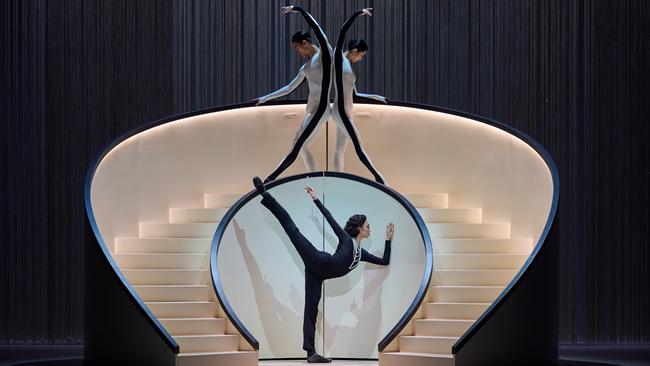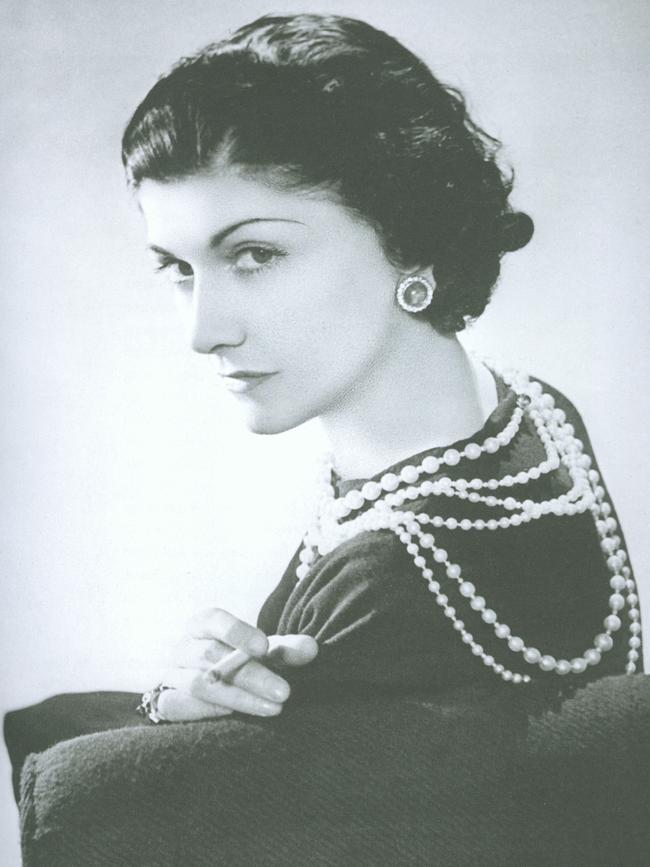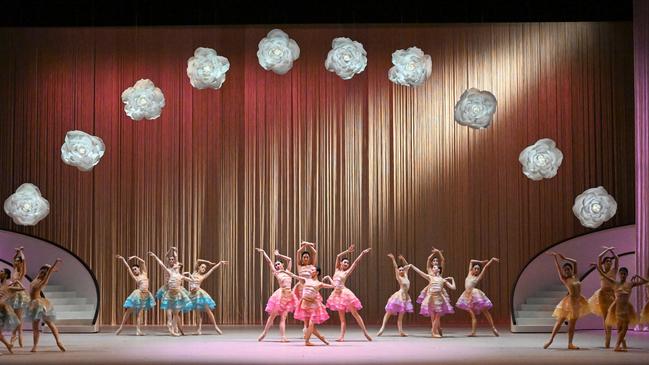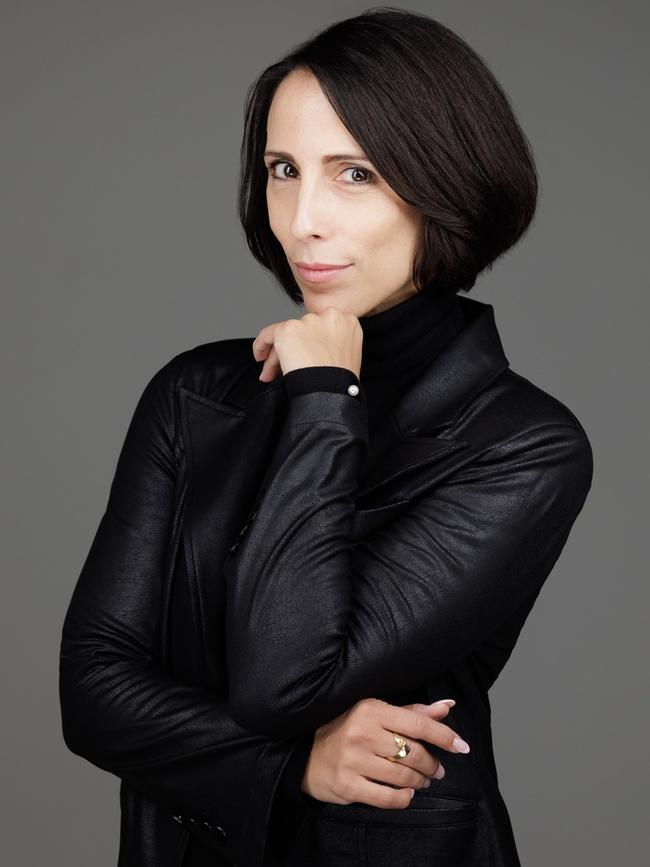Coco Chanel ballet looks at dark side of fashion icon’s rags-to-riches story
Annabelle Lopez Ochoa’s exploration of the life of the French fashion legend Coco Chanel is more than a rags-to-riches fairytale.

It is 9.30 on a Wednesday morning and Belgian-Colombian choreographer Annabelle Lopez Ochoa is looking elegant despite being dressed down in relaxed, charcoal activewear. She is raring to get back into the studio at the Queensland Ballet’s Brisbane headquarters. It is week two of rehearsals for the Australian premiere of Lopez Ochoa’s Coco Chanel: The Life of a Fashion Icon and the choreographer has just a few days left with the dancers before jetting off to the US, where she is creating a new Carmen for Miami City Ballet.
Then it’s on to Amsterdam – which happens to be her home base – to stage Scurry Night, a ballet inspired by Banksy’s work, with the juniors of Dutch National Ballet. After that, she returned for the final fortnight of rehearsals with the QB dancers ahead of last night’s premiere.
Lopez Ochoa is one of the most in-demand choreographers working today, renowned for her full-length narrative classical ballets that explore strong, multifaceted, historical female figures: think Eva Peron, Frida Kahlo and Maria Callas.
But when Hong Kong Ballet artistic director Septime Webre invited her to create a new work that was connected to Chinese culture but avoided politics, she initially was flummoxed.
“I said Chanel was on my bucket list but that it had nothing to do with China,” recalls Lopez Ochoa, who had yet to visit Hong Kong. Webre leapt on the idea, pointing out the reverence with which the country’s population viewed fashion, Chanel in particular.
“Now that I’ve been to Hong Kong I know every five or six blocks there’s a Chanel boutique, always with a queue outside, so it did have a relationship to Chinese culture.”
The idea for Coco Chanel: The Life of a Fashion Icon was born, and it would evolve into a co-production with Hong Kong Ballet, Atlanta Ballet and QB.

The Chanel logo may be coveted and internationally recognisable, adorning perfume, handbags, shoes and – most importantly – clothing. But what of the woman behind the brand? In 2020 Lopez Ochoa and her regular artistic collaborator, Nancy Meckler, began their deep dive into Coco before Chanel and were astonished by what they discovered.
On the surface it is a fairytale, rags-to-riches story of Gabrielle “Coco” Chanel, who was born in 1883 in France and endured an impoverished childhood during which she learned to sew during the day and sing for money at night.
Uultimately she rose to become one of the most sought-after and enduring designers in history, radically reshaping the silhouette of women and liberating them from the decorative, restrictive fashion of the era that preceded her designs.
A successful businesswoman, she would go on to enjoy a glamorous life, surrounded by political, business and cultural leaders from Winston Churchill to Jean Cocteau, and enjoy numerous love affairs. Russian composer Igor Stravinsky was one of her lovers. She threw off the shackles of poverty to become a wealthy, independent woman in an industry traditionally dominated by men.
Yet she also endured a tough, often lonely life. She was abandoned in an orphanage with her sister not long after their mother died – their father promised to return but they never saw him again. The one true love of her life, Arthur Edward “Boy” Capel, was killed in a car crash aged just 38 and, although she had more lovers, she never married or had children.
There was a much uglier side to her life, too. It emerged Chanel was an anti-Semite and Nazi sympathiser who had a long relationship with Gestapo spy Baron Hans Gunther von Dincklage, special attache to the German embassy in Paris, who supported her lavish lifestyle during Germany’s occupation of France in World War II.
Chanel would live a long life – she died aged 87 – but she worked tirelessly up until and including the day she died.

When Lopez Ochoa emerged from her two-year research period, she knew she had the ingredients for a dramatic, captivating and visually stunning ballet. But a hagiography it is not.
“I’m not into fairytales,” she says. “I understand we’re making art for all demographics and that fairytales appeal to families and children, but I think as an art form we have to make an effort to come up with new stories and to attract new audiences but also entertain our audiences, make a little effort.
“I find Coco an interesting character: complex, unconventional, a visionary. But she was bitter, she wasn’t nice to the women who worked for her, she seduced a lot of men who were married, it’s not the nicest aspects of humanity I’m putting on stage. But I think dance can handle that. We don’t always have to have a prince or princess who’s going to get married. It’s a dark story wrapped in beautiful poetry and steps.”
Exploring the lives and nuances of strong, seminal women through dance is an interesting choice and it is garnering attention. To date Lopez Ochoa has created more than 100 ballets for 80 dance companies globally, from short conceptual pieces to full-length narratives and dance films.
It is her exploration of the lives of influential women that is really making waves, beginning with the critically acclaimed one-act ballet Broken Wings for English National Ballet in 2016 that explored the life of Kahlo and later was expanded into a full-length narrative ballet, Frida, for Dutch National Ballet.
“I think Annabelle is an extremely astute observer of the world and what might be of interest and important in ballet at the moment. Ballet’s conventional repertoire, just like that of opera, is full of women who are victims and who die,” says The Australian’s dance critic Deborah Jones. “She’s been incredibly smart about seeing a gap, developing this reputation as a choreographer interested in making full-length ballets about strong women, subjects who are very vivid. And that is unusual, that is what makes her stand out.”
Working with Metzler and composer Peter Salem, another regular collaborator, Lopez Ochoa has crafted a ballet that is inspired by and investigates certain aspects of Chanel’s life.
Rather than a slavish reproduction of dates and facts, it is a translation and interpretation of the French designer’s story through visual art and movement.
Told across two acts, the work explores three themes: her transformation from Gabrielle Bonheur Chanel into Coco Chanel, her revolutionary impact on fashion and the loss of her one true love.

A mutual friend introduced Lopez Ochoa to Parisian set and costume designer Jerome Kaplan, who had already been commissioned by Webre to design a new ballet for Hong Kong Ballet. Webre engaged Kaplan after seeing his designs for Australian choreographer Stanton Welch’s Sylvia, which was performed by the Australian Ballet in Sydney.
“Annabelle asked me about Coco Chanel and yes, sure, I was excited, I thought it was a great idea and I’m French, born in Paris, and know really well the fashion world,” Kaplan says, speaking from Germany where he is designing a new La Bayadere for Ballett Dortmund, Chinese choreographer Xin Peng Wang’s farewell production.
Kaplan is well known to Australian audiences through his clever, evocative designs for Alexei Ratmansky’s Cinderella and Lucas Jervies’s Spartacus, both for the AB. In an extensive 30-year career he has designed for both theatre and opera companies but predominantly with dance, ranging from Ballets de Monte-Carlo to Royal Danish Ballet, Dutch National Ballet, Houston Ballet and American Ballet Theatre.
For Kaplan, a “Chanel connoisseur” given his deep knowledge of the designer’s work, it was a matter of having a clean, minimal set on which to layer the rich and detailed story of the designer’s life.
“There are so many things to say about Chanel’s life – her work, her fashion, her love affairs – that I felt it better to keep the set simple. Just like her style: simple, elegant and minimalist,” Kaplan says. His visit with Lopez Ochoa to the first major Chanel retrospective at the Palais Galliera in Paris in 2020 was a breakthrough: both Kaplan and Lopez Ochoa were struck by the enduring elegance of the original bottle of Chanel No.5 perfume displayed in the exhibition. The design remains unchanged to this day, more than 100 years later.
“We drew inspiration for the sets from that bottle, I wanted to create something timeless, something that will last for many years to come,” Kaplan says.
The set in the first act is completely off-white with black lines, a nod to the Chanel No.5 box; while act two is presented on a black set as Chanel’s story deepens with the death of Capel and the darker elements of her character emerge.
A sweeping double staircase, evocative of the double-C Chanel logo, was Lopez Ochoa’s idea, a visual representation of Chanel’s climb from the lowest rungs of society to the top echelons.
“There’s a certain cleanliness to the design,” Lopez Ochoa says. “Jerome is a wonderful artist, he knew so much about Chanel, he was my Wikipedia.”
Numbering 120, the costumes are a homage to, not a replication of, Chanel’s designs. The choreography is athletic and expansive, the dancers needing costumes that allowed them to move freely.
“Everything is an evocation, a homage. Some things are really close to the look – at the end we have a white suit with a black line and a black suit with a white line that’s very close to Chanel but not a copy,” Kaplan says.
“But Chanel was really open about that, she said there’s no success without imitation.”
While Lopez Ochoa neither sought nor was granted approval from the Maison de Chanel – pointing out they have no actual Chanel designs so approval wasn’t needed – Kaplan understands it is aware of the production. “It’s not official but I think they are happy we are talking about Chanel and we’re doing it really respectfully,” says Kaplan, whose son Paul works for Chanel as a writer and let them know about the production.

Coco Chanel: The Life of a Fashion Icon is an international co-production – QB is poised to unveil the ballet, which debuted in Hong Kong last year and Atlanta in February this year. Although it comes as a fully fledged production, Lopez Ochoa says she is quickly teaching the QB dancers the steps so they can spend time on the direction and character building.
“That to me is the most interesting because then it becomes the Queensland Ballet version,” she says.
While the critical reception to Coco Chanel was mixed in Hong Kong and Atlanta, noting Chanel’s characterisation didn’t reveal enough of her complex nature, Lopez Ochoa is unmoved. “I don’t read reviews so I don’t know which review you’re talking about,” she says. “Journalists have their profession, I have mine. I don’t know which cast [the reviewer] saw, which production. I believe it works.” She adds: “I am digging deeper into how you portray the character because I have time now, I don’t have to think of the steps, I have time to tell the three casts and they can do it justice.”
Lopez Ochoa arrived at a tumultuous time for QB, following the recent and abrupt resignation of new artistic director and the Royal Ballet’s longest-serving ballerina, Leanne Benjamin. The appointment of the Rockhampton-born Benjamin had been announced amid great fanfare but she lasted in the role less than six months. While a company media release said “the current economic environment” had posed insurmountable challenges for both the board and Benjamin, acting artistic director Greg Horsman implied there was both a cultural and budgetary misalignment.
“I believe Leanne was quite clear in the interview process what her vision would be for the company,” says Horsman.
“There were adjustments that were having to be made to the repertoire and I think Leanne probably felt her vision was being compromised … There were some things in place from Li’s [former artistic director Li Cunxin’s] tenure, but Leanne didn’t want to continue with those.
“Leanne hasn’t lived in Australia for a long time and the culture in the Royal Opera House is very different to an Australian context, so I’m sure Leanne was finding lots of things difficult in that regard. I also feel when you’re very new in an artistic director position it’s a very steep learning curve, so if you haven’t got some sort of experience in the management side … It’s very sad for the organisation the way we’ve ended up in this situation, but I think probably for the sake of where the company is at the moment, it was a decision that was right.”
QB has yet to announce when the search for a new artistic director will begin.
While Lopez Ochoa was taken aback by the news, she says the distraction of a new production was welcomed by the dancers. “First I lost Li [who commissioned Lopez Ochoa] then I was about to arrive and suddenly Leanne wasn’t going to be here,” Lopez Ochoa says. “But I haven’t felt the dancers are a boat without a captain.”
Although she has worked with countless companies around the globe, Lopez Ochoa says working with the 60-strong dancers of the QB has been a pleasant surprise.
“They’re very hungry,” she says. “What is different is you call four people to come and learn a role and six people show up because they want to learn it, even though they might not dance it. It’s been a lot of fun.”
Queensland Ballet’s co-production Coco Chanel: The Life of a Fashion Icon is at QPAC until October 19.



